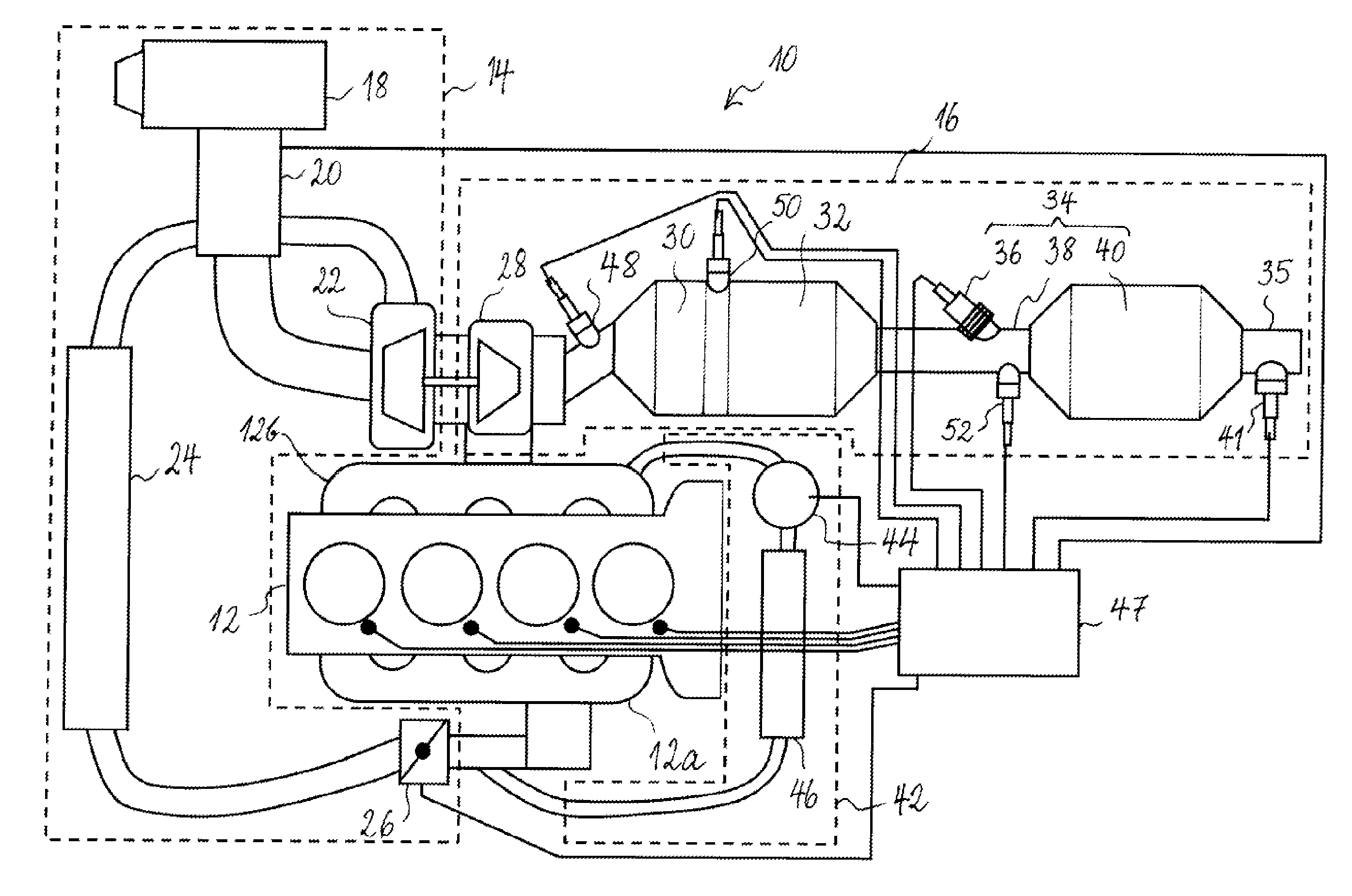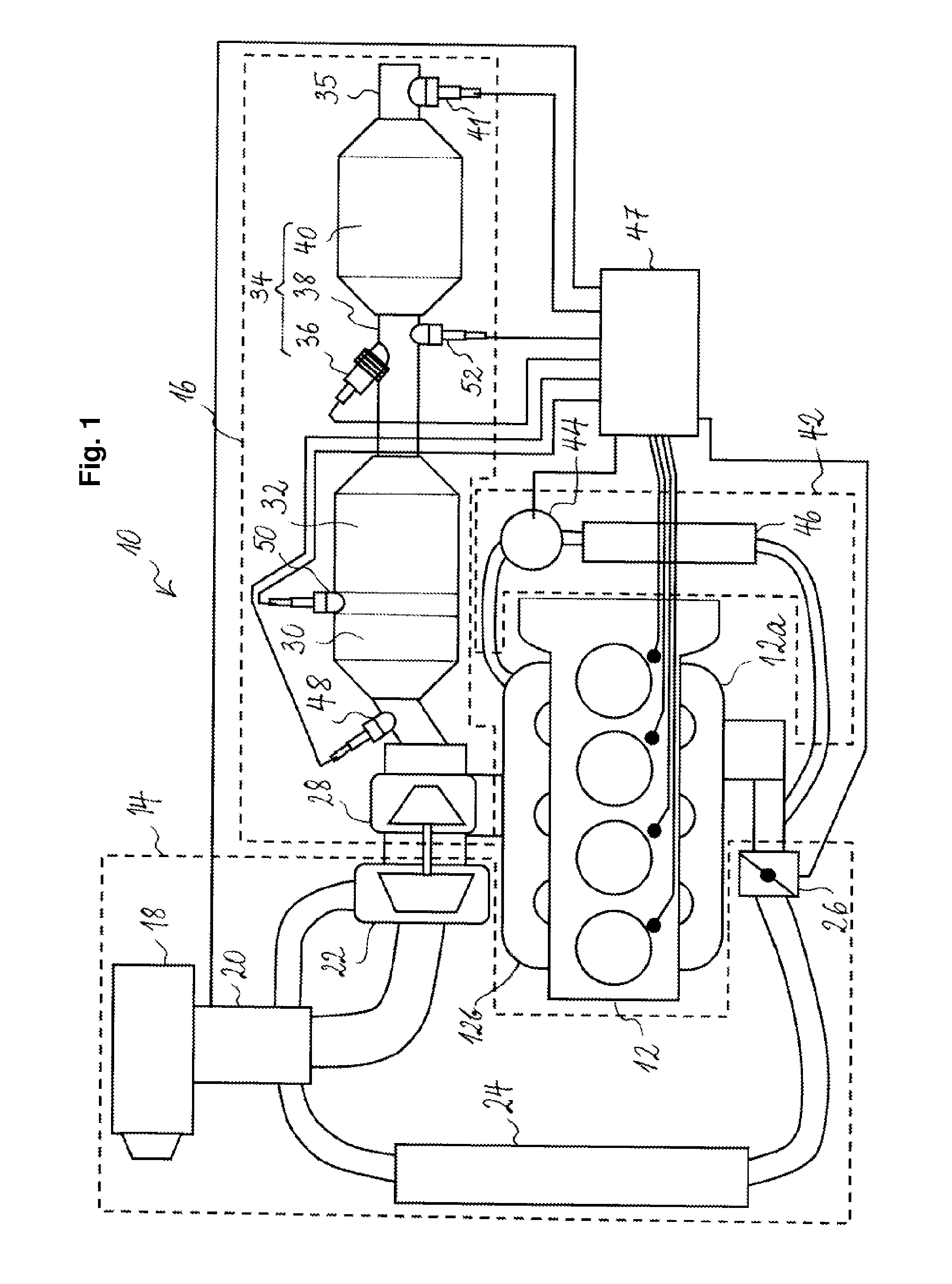Compression-ignition engine with exhaust system
a technology of exhaust gas treatment and compression ignition, which is applied in the direction of electrical control, process and machine control, etc., can solve the problems of increasing the nox emissions, the nox emissions are not enough to maintain the temperature of the engine the heat arriving at the scr device is no longer sufficient to maintain the temperature thereof above the required temperature threshold, etc., to prevent uncontrolled nox emissions, and reduce the nox emissions
- Summary
- Abstract
- Description
- Claims
- Application Information
AI Technical Summary
Benefits of technology
Problems solved by technology
Method used
Image
Examples
Embodiment Construction
[0032]Referring to FIG. 1, a diesel compression-ignition engine 10 according to a preferred embodiment of the present invention is shown. The engine 10 comprises an engine block 12 connected up-stream to an air intake passage 14 and down-stream to an exhaust system 16 with an exhaust gas after-treatment assembly.
[0033]The air intake passage 14 comprises an air filter 18 to filter air draw from the outside into the engine, a mass air flow sensor 20, a turbocharger 22 an intercooler 24 and a throttle valve 26 connected upstream to intake manifold 12a.
[0034]Exhaust system 16 comprises the turbine 28 of turbocharger 22, connected downstream to the exhaust manifold 12b of the engine, a three-way catalyst device 30, a diesel particulate filter 32 and an SCR device 34 arranged upstream of tailpipe 35. SCR device 34 includes a urea or ammonia injector 36, a decomposition (in case of urea injection) and / or mixing chamber 38, an SCR catalyst 40 connected downstream to the decomposition and / o...
PUM
 Login to View More
Login to View More Abstract
Description
Claims
Application Information
 Login to View More
Login to View More - R&D
- Intellectual Property
- Life Sciences
- Materials
- Tech Scout
- Unparalleled Data Quality
- Higher Quality Content
- 60% Fewer Hallucinations
Browse by: Latest US Patents, China's latest patents, Technical Efficacy Thesaurus, Application Domain, Technology Topic, Popular Technical Reports.
© 2025 PatSnap. All rights reserved.Legal|Privacy policy|Modern Slavery Act Transparency Statement|Sitemap|About US| Contact US: help@patsnap.com



